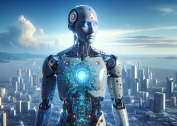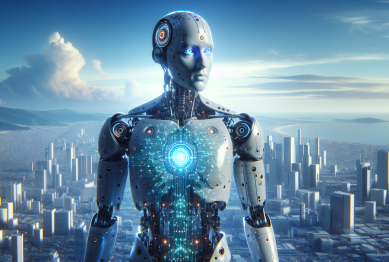From calendar assistants to smarter search engines, artificial intelligence has integrated into daily routines in ways most don’t realize. This guide unpacks how you could benefit from AI tools for productivity, learning, and more—explore what’s changing, privacy considerations, and the practical possibilities with technology that’s evolving fast.
AI in Daily Life: What’s Already Here
Artificial intelligence is quietly enhancing daily experiences in several ways. Most people interact with AI-powered applications when asking virtual assistants, typing messages, or shopping online. For example, predictive text uses machine learning algorithms to suggest word completions or corrections. AI also shapes product recommendations on streaming platforms, tailoring options to match usage patterns. These applications aren’t visible, but they influence how information and choices are presented. Devices like smartphones, smart speakers, and even home thermostats make use of AI to understand routines and suggest more efficient ways to manage energy, time, or entertainment. While some may view these tools as simple conveniences, the underlying technology is highly complex and adapts over time to individual preferences and needs.
There are countless ways AI operates in the background across major platforms. Image-recognition tools categorize and tag photos, while search engines use sophisticated algorithms for more relevant results. When people use translation apps, these rely on neural networks—a type of artificial intelligence trained on vast datasets—to generate context-aware translations. Even navigation apps utilize AI to analyze traffic patterns, weather, and user behavior to suggest optimal routes in real time. The combination of these technologies means daily tasks—like finding recipes, researching travel, or managing finances—happen with unprecedented efficiency and personalization. AI’s influence stretches across seemingly mundane choices and substantial decision-making moments alike.
The seamless integration of artificial intelligence into technology is no accident. Companies invest heavily in using AI to improve user satisfaction and reduce complexity. Many people might not consider virtual assistants or facial recognition fundamental elements of AI, but they represent real-world applications used by millions every day. These innovations continue to evolve as researchers focus on natural language processing, recommendation systems, and intelligent automation. The landscape of daily activities keeps shifting as technology gets smarter, adapting to new habits and challenges. Common actions now handled by AI reflect just the beginning of possibilities on the horizon.
Smarter Productivity: AI for Organization and Focus
Artificial intelligence brings powerful tools for boosting productivity and staying organized. Smart calendars, task managers, and note-taking apps employ AI-driven reminders that adapt to user habits. By analyzing usage patterns, these digital assistants learn to suggest optimal times for meetings or automatically prioritize ongoing projects. Even email inboxes now use AI to highlight urgent messages or filter spam with impressive accuracy. Such features relieve users from monotonous sorting and scheduling, freeing up more time for focused work.
A growing number of people rely on AI-enabled scheduling assistants, which coordinate meetings or appointments across multiple calendars without manual effort. These tools consider working hours, preferred meeting times, and current workload when proposing options. Machine learning algorithms can also interpret spoken needs or instructions, transcribing them into actionable reminders or lists. The result? Higher efficiency and fewer forgotten tasks. With ongoing advancements, organizations can expect even more automated workflow support to emerge.
Focus applications harness artificial intelligence to recommend personalized productivity routines. Tools like digital wellbeing platforms and distraction blockers use AI-driven insights to analyze how users allocate their time on devices. By assessing patterns, these applications can suggest ideal work-break intervals, flag possible inefficiencies, or propose strategies to minimize productivity slumps. These subtle nudges cater to unique working styles and transform the way people approach daily responsibilities, making AI-enabled productivity solutions central to modern routines.
AI and Learning: Adapting to Your Needs
Learning opportunities have expanded dramatically with the rise of artificial intelligence. Educational platforms use adaptive algorithms to customize lessons based on each learner’s pace and skill level. When students engage with language learning, math exercises, or coding tutorials, AI tracks progress and identifies knowledge gaps. By tailoring the order and difficulty of exercises, these systems help learners focus on areas that need improvement, accelerating mastery and retention. This level of personalization would be impossible with traditional, static resources.
Online course providers and virtual tutors leverage AI to provide instant feedback on assignments and quizzes. Machine learning models analyze student answers, explain errors, and point out deeper learning trends. This allows learners to correct mistakes quickly and remain engaged. Additionally, chatbots powered by natural language processing offer round-the-clock support, answering questions or clarifying confusing topics. These AI-driven resources have proven especially valuable in remote or self-paced education settings, lowering barriers to access high-quality instruction.
Artificial intelligence also plays a role in curating vast educational content. Recommendation engines suggest new books, articles, or instructional videos aligned with a learner’s interests and performance. AI-powered research tools help users navigate scientific journals, extracting summaries or key findings from thousands of sources in seconds. As technology evolves, the possibilities for tailored, engaging, and efficient learning opportunities are expanding, impacting education across all ages and disciplines.
Understanding AI: Risks and Ethical Considerations
AI systems, while powerful, present significant risks and ethical concerns. One key issue is data privacy. Many of the most helpful personalization features depend on collecting and analyzing user data. Without clear guidelines and transparency, there’s a risk that sensitive information could be used inappropriately. Ethical AI development prioritizes user consent, anonymization of data, and robust security protocols to protect individuals’ privacy, but these safeguards vary widely by application and provider.
Bias in algorithms is another major consideration. Because AI systems are trained on historical data, they can inadvertently reinforce existing prejudices. For instance, an AI responsible for screening job candidates may reflect the biases present in prior hiring practices unless rigorously checked. Organizations and researchers are actively working on developing fairer and more transparent AI models, but challenges persist. Understanding the limitations of technology—and requesting explanations about how decisions are made—helps foster more ethical adoption.
Automation and decision-making by AI can also impact accountability. When machines automate crucial choices—such as loan approvals, medical diagnostics, or legal case analysis—stakeholders must ensure appropriate oversight. Ethical frameworks are evolving to regulate and monitor AI’s impact, aiming to ensure that benefits are shared fairly and risks are minimized. Being mindful of these dynamics encourages individuals and organizations alike to use AI responsibly and champion transparency from technology developers.
Exploring AI for Creativity and Entertainment
Artificial intelligence is shaking up creative and entertainment spaces, providing fresh tools for artists, musicians, and content creators. AI-generated music composition and art utilize complex algorithms to learn patterns from real works and produce new, inventive material. Photo editing apps frequently use neural networks to help users remove background noise, enhance colors, or simulate artistic styles. This democratizes creative processes, making features previously reserved for professionals widely available.
In the entertainment industry, streaming services lean on AI recommendation engines to deliver content tailored to each viewer’s taste. Whether exploring niche films or trending series, users encounter curated playlists that reflect their unique viewing history. Real-time AI curation means that as tastes change, so do recommendations—helping people discover new music, books, or podcasts in unexpected ways, and expanding horizons effortlessly.
Storytelling and interactive media have also embraced AI. Video games create worlds that respond dynamically to user choices, powered by artificial intelligence that adapts difficulty and narrative paths. Text generation tools coax new plotlines or dialogue developments, supporting writers with instant inspiration and editing help. AI’s role keeps growing—innovators in gaming, literature, and visual arts are finding new possibilities at the intersection of creativity and intelligent technology.
What’s Next: The Future of AI in Everyday Experiences
The next wave of artificial intelligence promises even deeper integration into daily routines. Researchers are refining how voice assistants interpret accents, emotions, and even context, making digital conversations smoother than ever. In healthcare, future AI could predict disease outbreaks, help design personalized treatments, or monitor chronic conditions with unprecedented precision. As these solutions mature, they’ll shape new norms around health management and preventive care.
Transportation and urban living are also poised for change. Smart cities are exploring AI-powered traffic management, autonomous vehicles, and energy-efficient resource planning. Sensors collect real-time data, while machine learning orchestrates flows of vehicles or electricity. The result may be greener, safer, and more accessible urban environments with benefits that ripple into everything from commute times to air quality. As adoption widens, ongoing collaboration between governments, businesses, and communities supports responsible innovation.
Looking ahead, the conversation around AI won’t just involve what’s possible, but what’s sustainable, equitable, and ethical. Open-source initiatives and transparent research practices invite more voices into technological development, broadening the impact. Individuals will be able to shape their own experiences more directly as user-friendly AI tools multiply. With thoughtful adoption, artificial intelligence could unlock improved solutions to daily problems, empowering people and transforming society one step at a time.
References
1. National Institute of Standards and Technology. (n.d.). Artificial Intelligence. Retrieved from https://www.nist.gov/artificial-intelligence
2. U.S. Department of Energy. (n.d.). Artificial Intelligence at the Edge. Retrieved from https://www.energy.gov/science-innovation/office-science/artificial-intelligence
3. Stanford University. (n.d.). AI Index Report. Retrieved from https://aiindex.stanford.edu/report/
4. Pew Research Center. (n.d.). Public Attitudes Toward AI. Retrieved from https://www.pewresearch.org/internet/fact-sheet/artificial-intelligence/
5. European Commission. (n.d.). Ethics guidelines for trustworthy AI. Retrieved from https://digital-strategy.ec.europa.eu/en/policies/european-approach-artificial-intelligence
6. Massachusetts Institute of Technology. (n.d.). Artificial Intelligence: Implications. Retrieved from https://news.mit.edu/topic/artificial-intelligence









